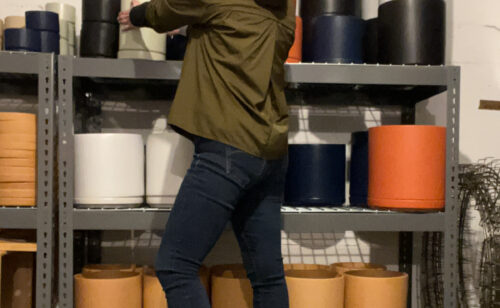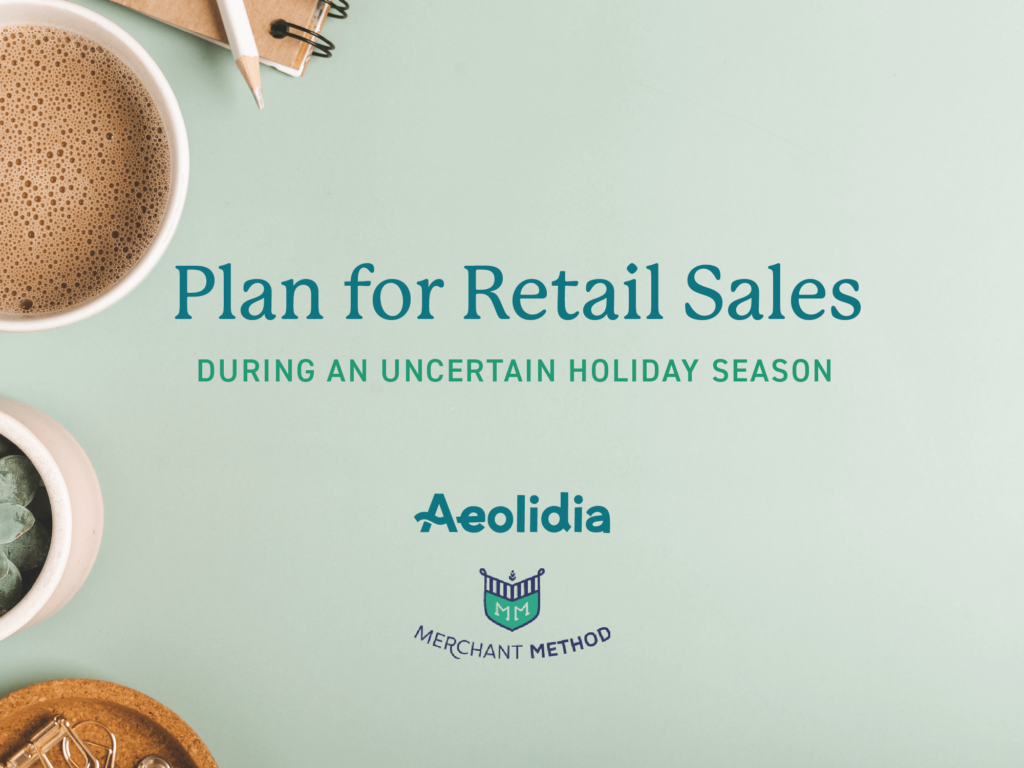
The holiday retail season is a crucially important sales period for every brick-and-mortar retailer. With so many unknowns, it It can be daunting to plan for this upcoming holiday season. That’s why we’re talking to Chris Guillot, who has created a pre-holiday game plan for brick-and-mortars that connects the dots between merchandising, marketing, pricing, and preparing their teams for the season ahead. No matter what size shop you have or how many holiday seasons you’ve been through – this plan will help you make the most of the months ahead.
Chris Guillot has been a retail educator since 1997 and has experience in multiple retail capacities including corporate and small business. Her consulting business, Merchant Method, helps small and medium-sized businesses (like yourself!) to use inventory for better cash flow, so you can do the things you really want to do – develop a loyal team and make customers happy.
Let’s be honest, many businesses have a love-hate relationship with their inventory and cash flow. Chris shows us how to use inventory as a powerhouse profit maker, instead of something that weighs you down. With your inventory working for you, you’ll learn to create or enhance your own holiday retail plan for a successful season – no matter what comes your way.
Your Guide to Mitigate Holiday Retail Uncertainties
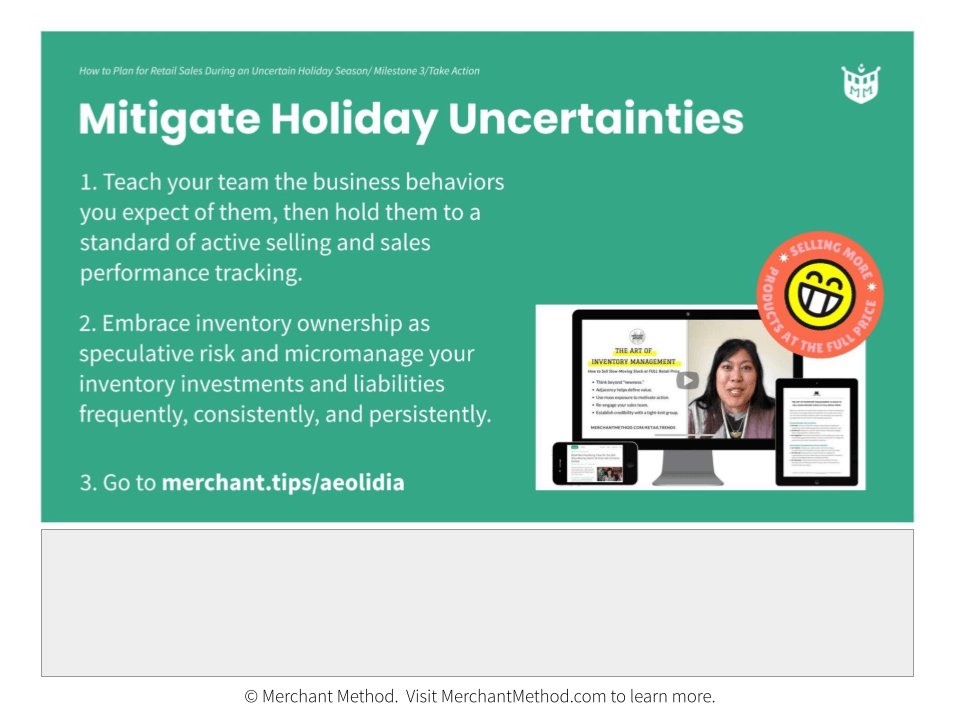
Right now, a lot of us retailers still feel like we’re treading water, with just enough cash flow to get by. The result of this stress is losing the passion that you need to get excited and make the sales that your business needs. In the lead-up to this holiday season, we’ll lead you through a pre-holiday plan that will help you manage your cash flow, regain your passion, and make those holiday sales!
The two main pillars of success this holiday season are to:
- Teach your team the business behaviors you expect of them, then hold them to a standard of active selling and sales performance tracking.
- Embrace inventory ownership as speculative risk and manage your inventory investments and liabilities frequently, consistently, and persistently.
And, you’ll also want to visit Merchant Method’s special cheat sheet for Aeolidia readers, The Art of Inventory Management: 14 Ways to Sell Slow-Moving Stock at Full Retail Price, for a full checklist.
For weekly tips like this, subscribe to our newsletter
"*" indicates required fields
The key is mastering inventory management. This means no longer letting your stock control you, but instead treating inventory as a cornerstone of profitable cash flow. We’re going to walk through the three time periods of the season: planning (pre-season), merchandising and marketing (in-season), and pricing strategies (end-of-season). Let’s get started.
Essential Planning For the Holiday Retail Season
Pre-season: This should be completed by late September.

There are three essentials to planning for a successful holiday season: cash flow projections, your marketing calendar, and seasonal expenses.
Cash flow projections. These projections connect your revenue and inventory ownership. While a typical accounting cashflow projection is high level, your goal is to understand where you’re going to end up at the end of the season, and then use this information to motivate your marketing, merchandising, and selling decisions in-season.
Marketing calendar. Your marketing plan connects your product marketing efforts to your merchandising – helping you to think about aligning product placement with your marketing.
Seasonal expenses. It’s key to connect your operating budget with your revenue plan. What tends to happen is that customer needs are different during gift-giving season than at other times of the year. For example, customers may usually be happy with a reusable bag, but for the holidays, they want the nice bag with tissue. So, you may need to order more or special tissue. If you don’t plan for these expenses, then they eat away at your margin. Do this audit by the end of September to avoid a big hit to your bottom line.
Audit Your Execution Process For the Upcoming Holiday Season
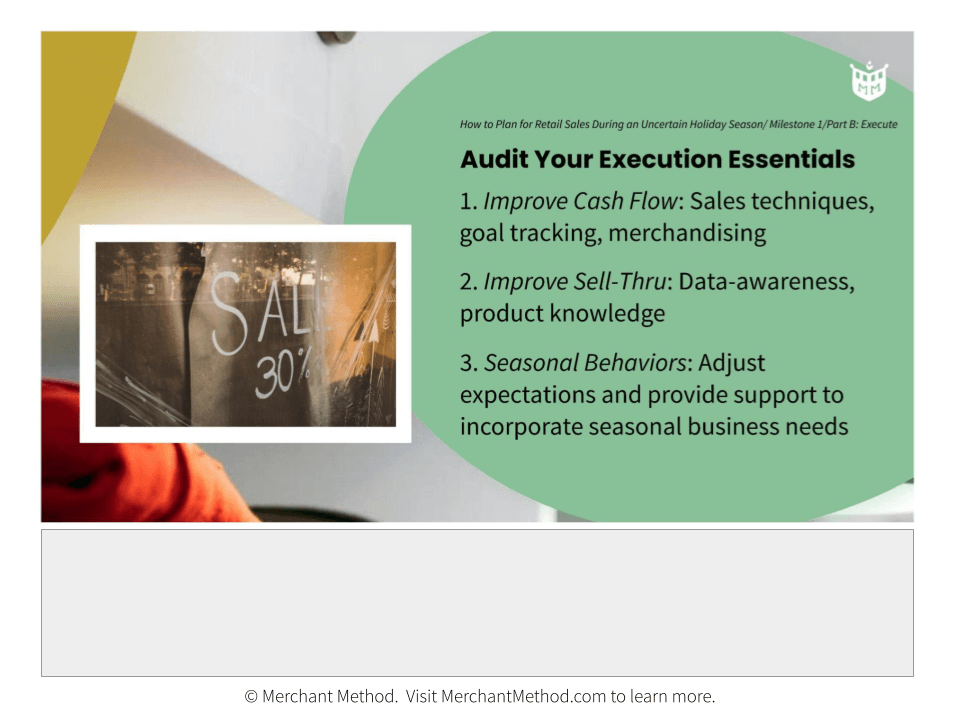
For this holiday season, think about not only the planning but the execution, because you need both. Many businesses don’t plan for the execution, creating a hurdle to jump over during the busiest time of the year.
Improving cash flow. This includes the implementation of sales techniques, goal setting, and merchandising. How are you going to teach your team sales techniques? Selling is always active, there’s no passive selling.
In 2020, a lot of owners alleviated pressure off of employees, via releasing sales goals. This was exactly the right move to make at the time. Fast forward, though, and many sales teams became have become dependent and have lost their agency. When we don’t give our teams sales goals, we’re not giving them a picture of how valuable they are. So make sales goals and make them visible.
Improve sell-through. This comes down to data-awareness and product knowledge. In your history of selling, you have a lot of wisdom, and you need to crack that nut so you can harness that information. Keep looking at your dashboard to come up with a set of reports that works for you.
Imparting product knowledge to your customer, or educating your customer, is very important. Right now, the most important product knowledge you can teach is use-over-time, like “look at this awesome shawl that can wrapped in different ways and be used every day!” Teaching the customer how they can use the product over time is how you get customers coming back.
Seasonal behaviors. Help your team adjust their expectations to provide support to incorporate seasonal business needs. One of the biggest challenges managers have is having employees get sucked into a task and not give great customer service. For example, how should they provide service if there are 4 times the normal number of customers in the store? These are specialty holiday retail techniques to learn, such as: making conversations shorter, asking if a customer needs a gift receipt, and scheduling breaks. It’s really important to plan these seasonal behaviors, because when you’re in the busy season, it’s hard to make changes.
Product Merchandising and Marketing For Holiday Retail
In-season: starting early to mid-October
For the holiday retail season, we need to go beyond focusing on the brand, the mission, and the store to talk about products.
“I have this pen, and I want to sell you this pen.”
Chris Guillot
Dynamic in-store merchandising is informed product placement. It goes beyond new product placement and it’s about using the available information to help us figure out where in the store to place the product.
Vary your techniques for in-store merchandising – data-informed and timely product movement should help you align your customers’ needs and the needs of your business. What tends to happen is we let the products decide when we’re going to merchandise. Or we go by what customers respond to, putting our business needs on the back burner. The result is that inventory that is selling slow keeps selling slow. With merchandising, you can improve your turnover to optimize the value of your inventory.
Effective merchandising techniques can keep your overall assortment feel fresh, garner attention towards overlooked SKUs, and help use your depth of inventory in attention-grabbing ways.
Retail Pricing Strategies to Manage Inventory Flow During the Holidays
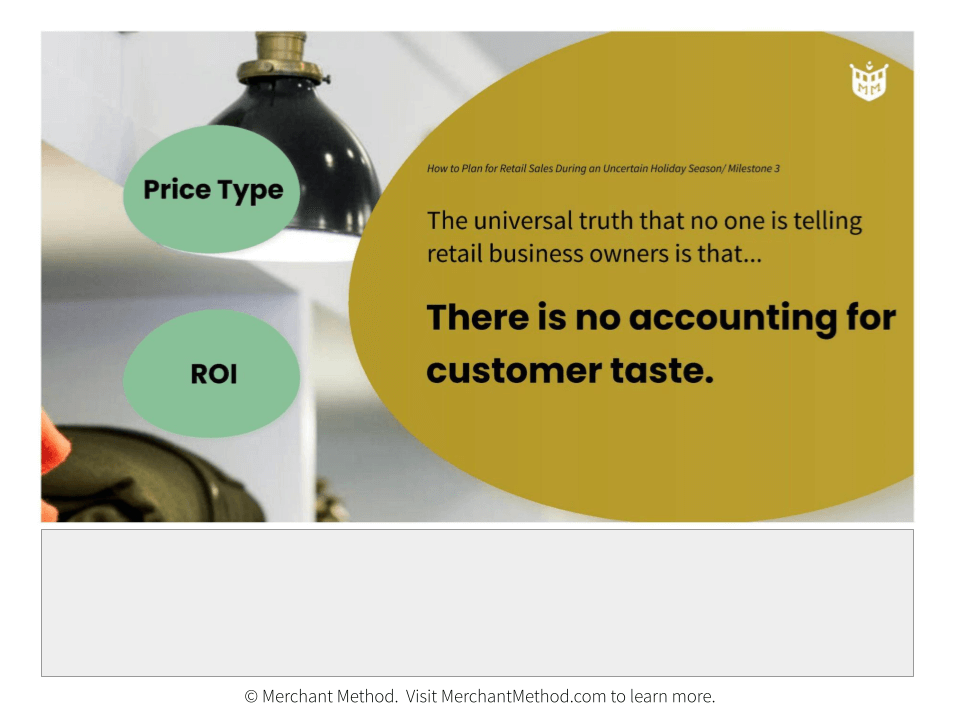
End-of-season: beginning before Small Biz Saturday
We talk a lot about initial pricing, but it’s also important to talk about pricing that carry-over inventory at the end of the holiday retail season.
The universal truth is that there’s no accounting for customer taste. It doesn’t matter how great of an aesthetic you have, a customer is going to pick what they want. Which means we’ll always have leftovers that don’t sell.
Most businesses benefit from planning three types of prices:
- Full: regular price. Should also include any repricing that accounts for your changes in the price of goods sold (COGS). Are there any basics that you need to reevaluate (perhaps raising the price)?
- Promotional: temporary, regular price. Note that U.S. Pricing Laws and Regulations on promotions vary by state.
- Markdown: permanent, multiple step. Instead asking of how much to mark down, ask what is the opportunity cost (inventory holding cost)?
Price type is a tool that helps you make the best of your ROI. Markdown is no longer a dirty word. It’s just a price category that helps you move inventory.
Questions and Answers
Below are the (abbreviated) answers from our live webinar.
How early is too early to start holiday marketing? We all cringe when we walk into a big box store in the middle of summer and see holiday merchandise – none of us want to be that shop! The Aeolidia team recommends ramping up your marketing efforts now (never too early for that!), but not necessarily including holiday-related items. Your goal is to be at the front of your customers’ minds when their attention turns to holiday shopping.
Can we talk about Small Business Saturday? Is it an opportunity or a bandwagon? That’s a great question, and it’s all about perspective. Any marketing is better than no marketing, so if you can use the day as an opportunity to connect with your customers, that’s a positive. Customers who are excited to support their local businesses may come to you on the day and that’s a great way to build the relationship. You need the day to work in the ecosystem of the relationship with your customers to be successful. So, if you’re located downtown with no foot traffic on a Saturday, then the day isn’t going to work for you. It’s an opportunity if it works for you, but if you’re putting all your eggs in that basket, then you could be setting yourself up for disappointment.
Is it disorienting for key customers to come back and see things moved around? It depends on the category of business you’re in. Certain categories, like bookstores or grocery stores, have customers who are used to items in a certain location and then moving merchandise can be really disorienting. Otherwise, moving items around leads to customer discovery. It can also be good for teams to explore the products in new ways, broadening their knowledge of the products.
Our shop isn’t in a busy shopping location, what can we do to promote? Start with your local Chamber of Commerce (or equivalent), see what activities they have going on, and hook into that to leverage what they’re already doing. Also, look at what types of sidewalk or right-of-way signs you can get special licensing for in order to do limited-time promotions.
What can I do with inventory I already have? Approach it with fresh eyes, like you and your team have never seen the product before. Wear it again, taste it again. Experience it anew and that might generate some new ideas for product placement, bundling, or marketing.
What About Your Online Shop?
Every brick-and-mortar retail shop has customers trying to research your shop and products online. If your website doesn’t have all of your inventory or isn’t easily shoppable, you’ll be missing out this holiday season! Learn more about how Aeolidia can get your brick-and-mortar shop online, and contact us if you’re ready for our help this year. We still have spots in our schedule to launch before the holidays!
A Newsletter That Goes Beyond Shopify 101
It’s easy to find beginner info about ecommerce online. If you’re past that? Subscribe to our newsletter for advanced strategies and need-to-know info for established shops. You'll get:
- Weekly tips to help you market and sell your products
- Updates when there is news that may impact your site
- Round ups of interesting links and info for brands
- Invites to our live trainings and webinars
- Instant access to our past emails
"*" indicates required fields
Related Posts
Let's take your online shop to the next level
The Shopify websites we design have a reputation for substantial improvements to ecommerce conversion rates and online sales. Let's talk!













